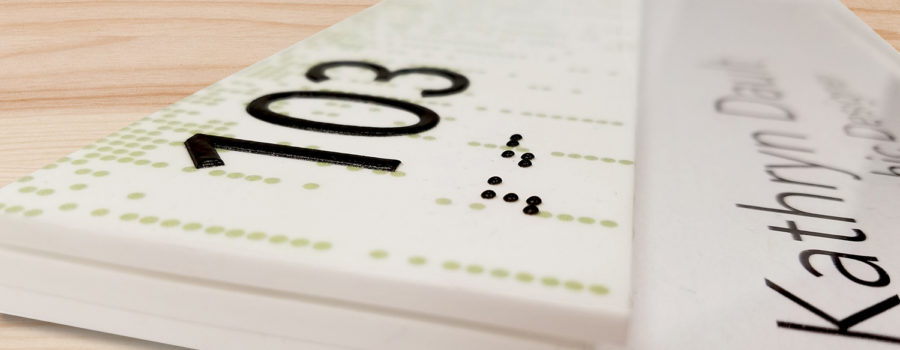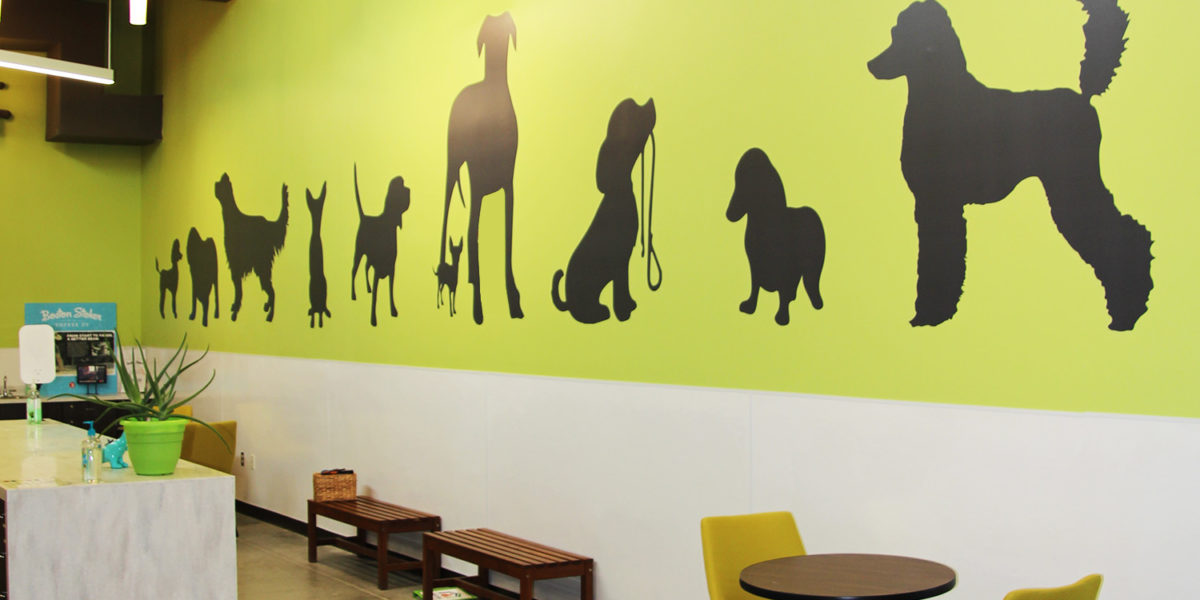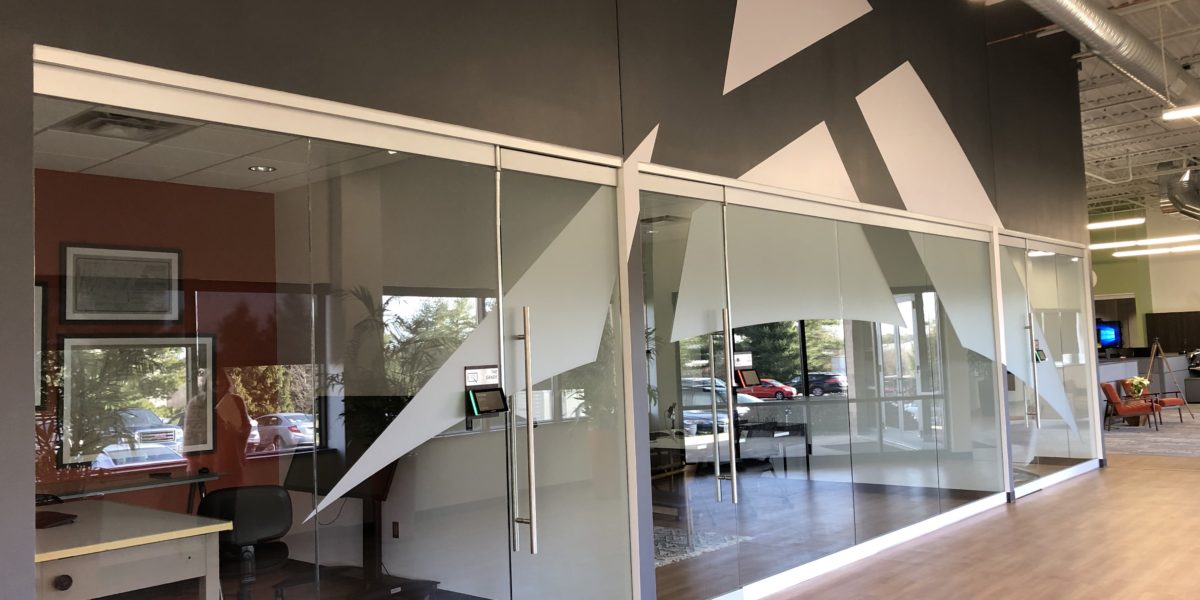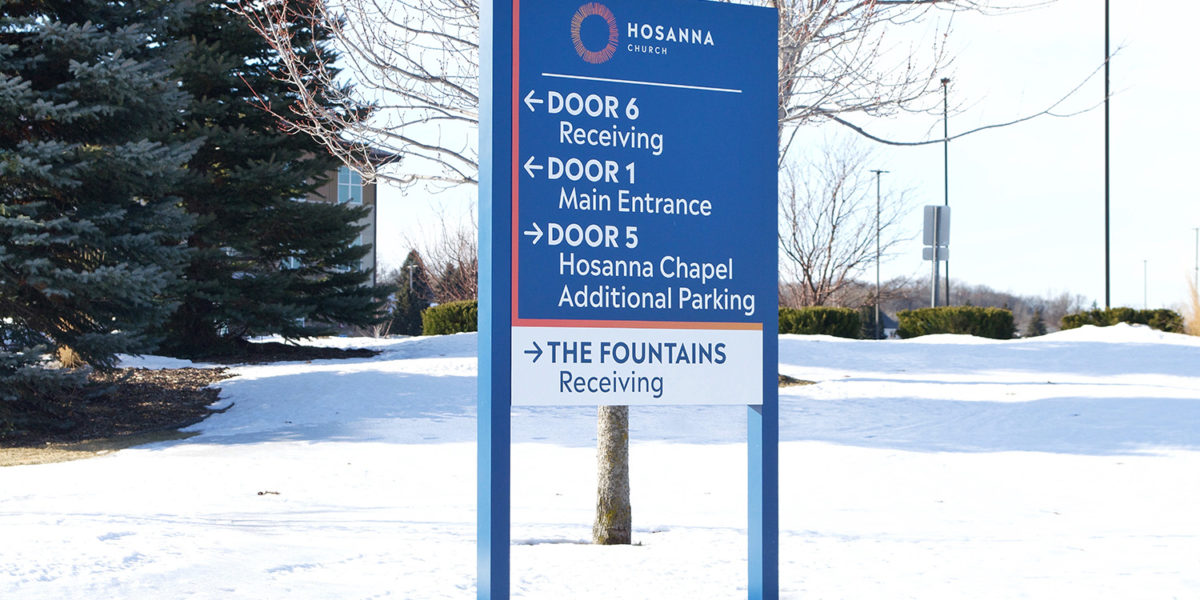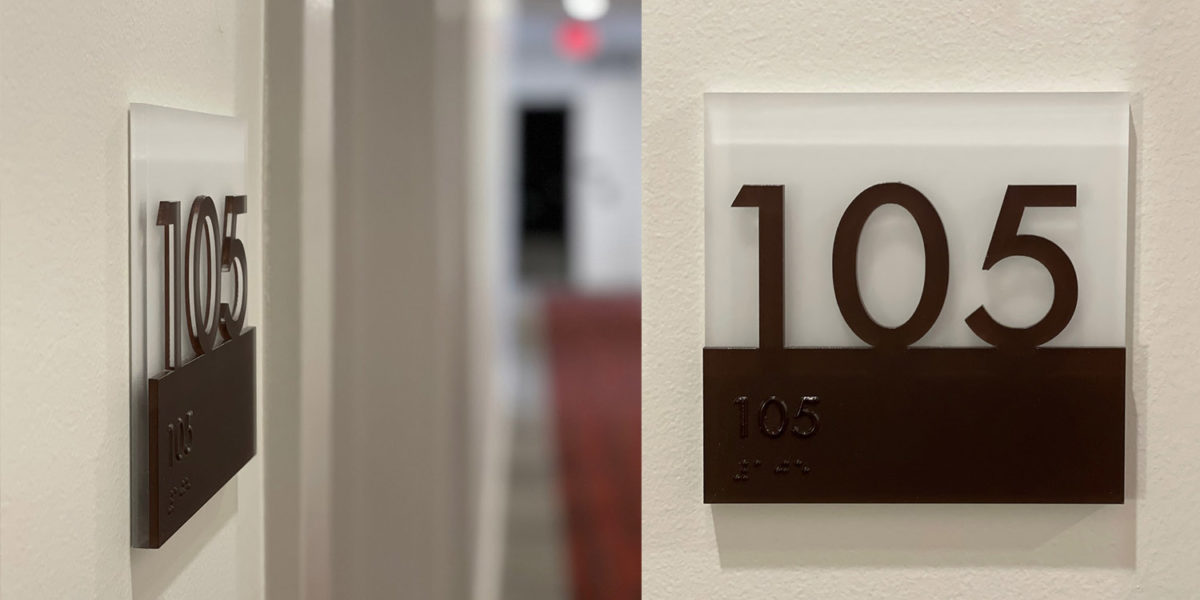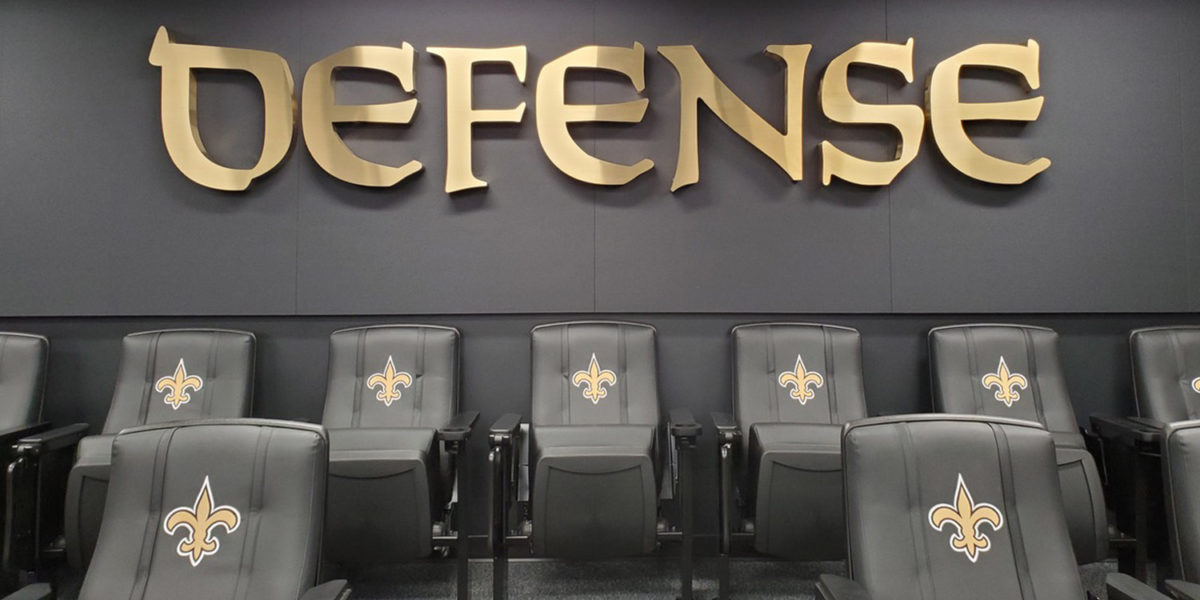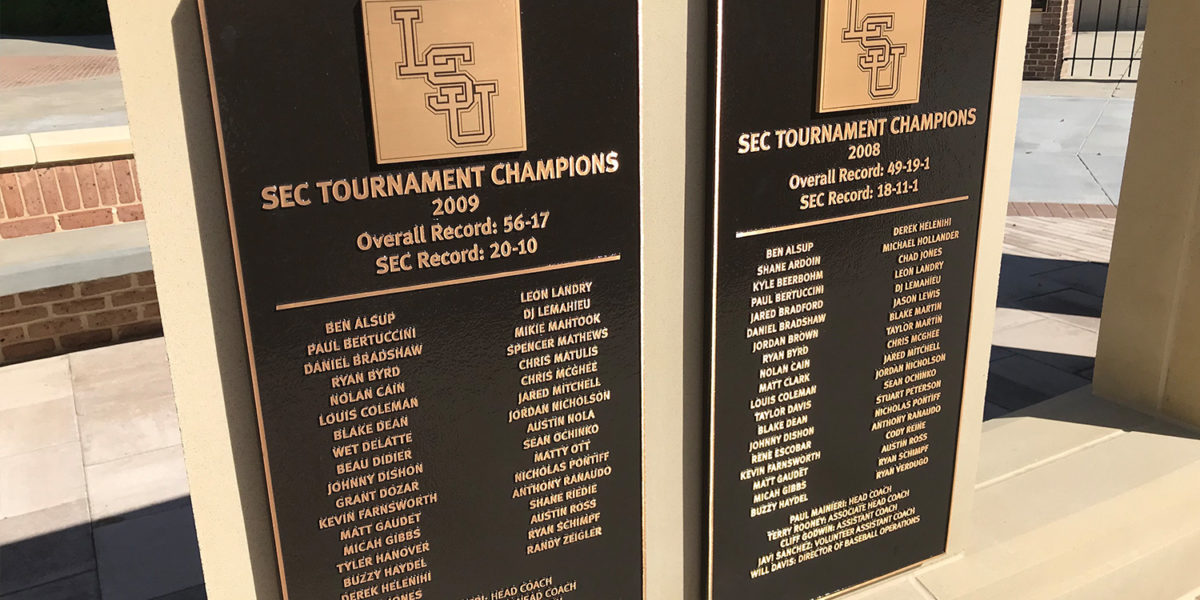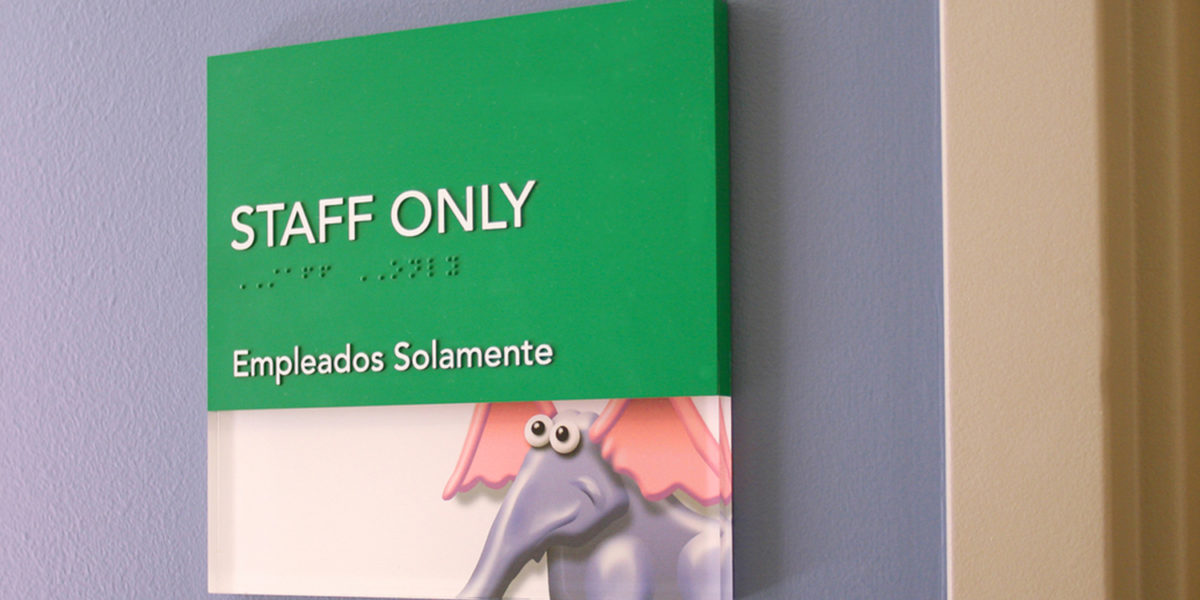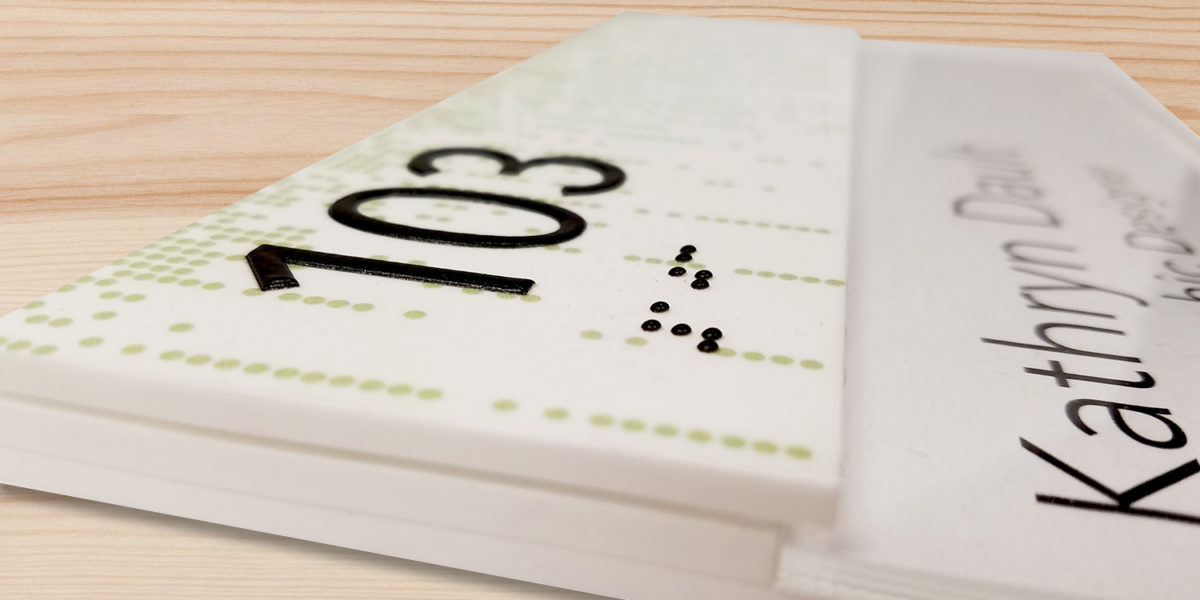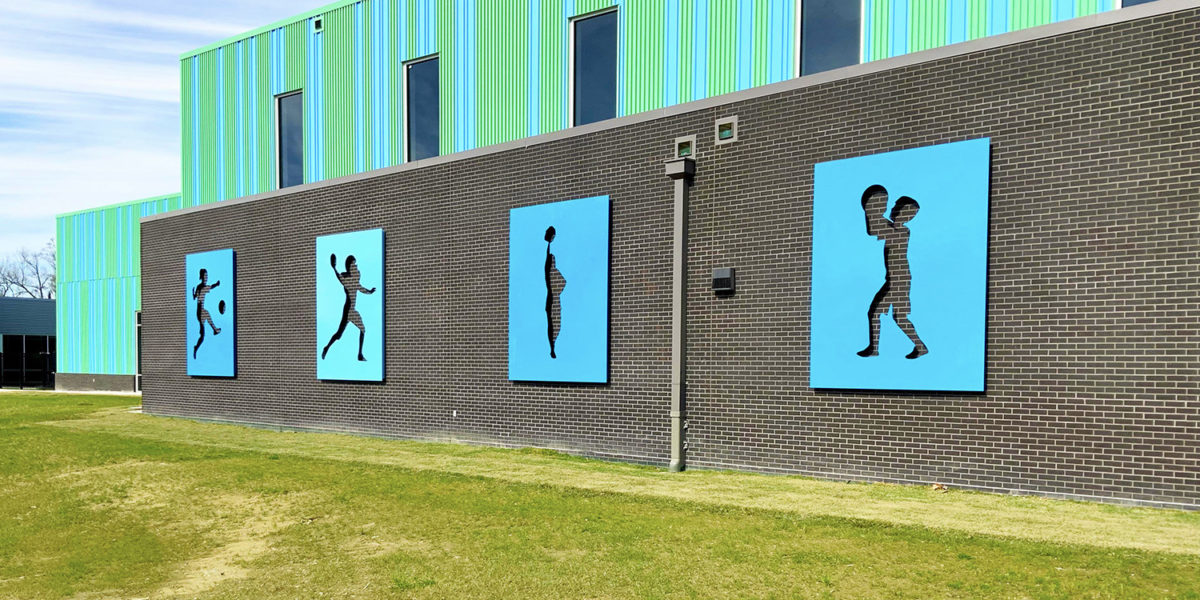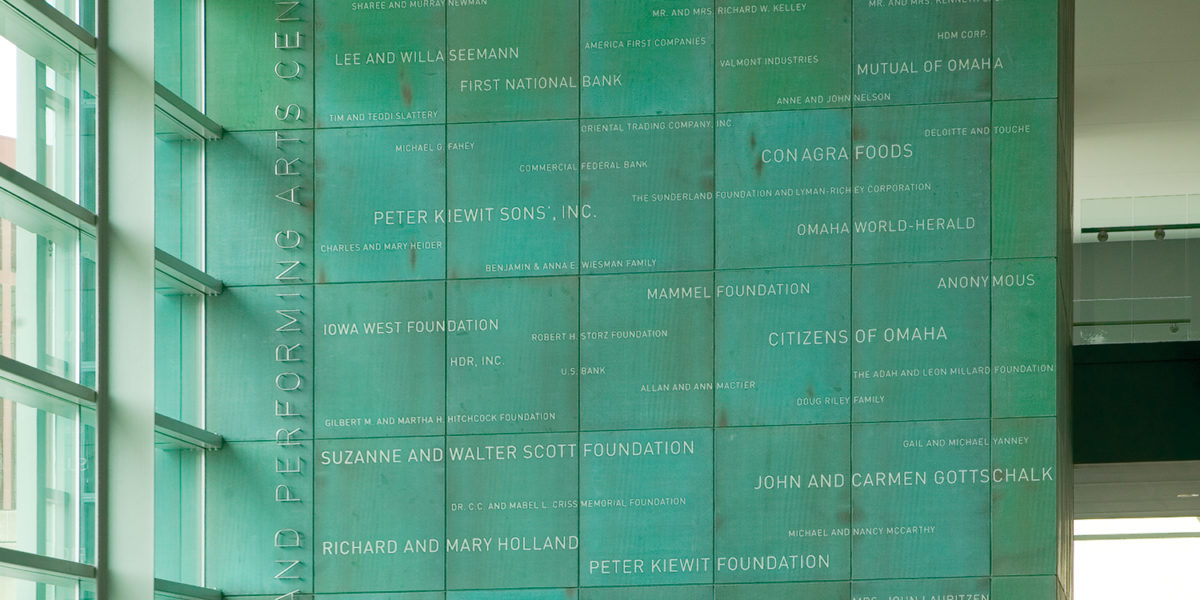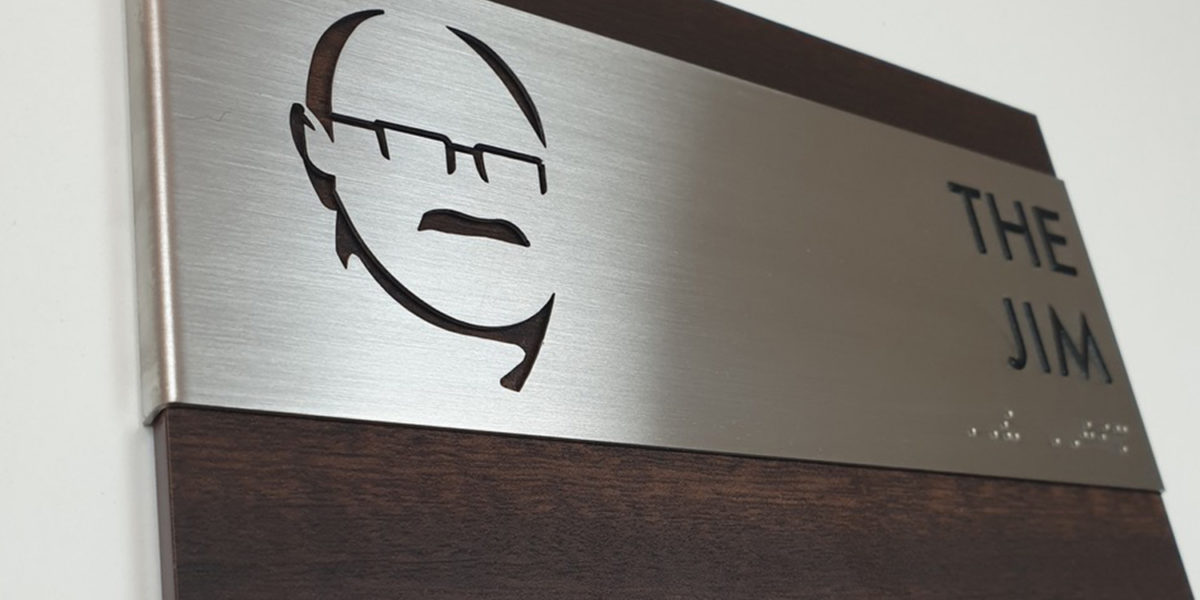Flat, Raised and Incised Graphics
Graphics are an essential element to signage design. In a sense, graphics are what breathes life into a sign. Like marble being chiseled into a statue or paper becoming a novel, graphics are what transform materials like aluminum into a Building Directory or other important marker in the built environment.
The elements that constitute graphics include typography, symbols, color, diagrams, and other decorative and illustrative elements. Layout is the concept that ties these elements together to create a visually attractive and informationally relevant sign.
There are 3 main categories of graphics application in signage: Flat Graphics, Raised Graphics and Incised Graphics. Different graphics applications can be combined with one another and with illumination methods to further customize a signage package.
1. Flat Graphics: Graphics without raised elements that are applied to the signage substrate.
2. Raised Graphics: Graphics that are raised from the surface of the signage substrate. Especially important due to ADA requirements for tactile and braille.
3. Incised Graphics: Graphics that are cut into or etched into the surface of the signage substrate.
Digital Printing

Digital Printing
Large-format printing on to substrate material such as aluminum or acrylic panels and onto vinyl films.
Characteristics: Durability, Unlimited Colors, Low to Medium Expense.
Cut Solid Graphics
A sheet of material is cut via a mechanical router, waterjet or laser and mounted to a sign face or surface. Creates small, thin graphic elements.
Characteristics: Durability, Color depends on material – can be painted or flat graphics can be applied, like direct Digital Printing or Digitally Printed Vinyl. Medium to High Expense
Fabricated Graphics
Graphics, such as dimensional letters, fabricated from thin metal that is joined and soldered. Typically made from metal and/or plastic.
Characteristics: Durability, Color depends on material – can be painted or flat graphics can be applied. Medium to High Expense. Translucent plastic faces and/or returns can be illuminated.
Cast Graphics
Graphics, such as dimensional letters, created when metal or liquid plastic resins are melted and cast into a mold to form dimensional letters or plaques.
Characteristics: Excellent Durability, Color depends on metal or plastic used – paint can be applied to the recessed areas. Low to High Expense. Bas relief sculptural effects can be added.
Photopolymer: ASI InTouch™
Process of photoetching a specialized plastic with photosensitive coating. Used primarily for ADA signage requiring tactile copy and Braille.
Characteristics: Durability, Paint or flat graphics can be added. Low to Medium Expense.
Raster Braille: ASI InTac™
Small spheres of metal or plastic inserted into small holes drilled into a sign panel to form Braille. Used primarily for ADA signage requiring Braille.
Characteristics: Durability, Color depends on material – can be painted, Medium to High Expense
3D Printing: ASI 3D Form™
Additive manufacturing process that builds up layers of plastic, into 3D shapes. Can be used for ADA signage requiring tactile copy and Braille.
Characteristics: Durability, Color depends on material – can be painted, Medium to High Expense
Sandblasted Graphics
A rubberized stencil of the artwork is cut and applied to the signage substrate, typically stone or glass, which is then sprayed with a pressurized stream of sand-based particles to carve the unprotected area.
Characteristics: Excellent Durability, Color range varies with materials used, Medium to High Expense.
Acid Etched Graphics
Used primarily on glass. A stencil of the artwork is cut and applied to the glass, which is then brushed with an acid mixture. After a specified length of time, the surface is washed and the stencil removed.
Characteristics: Excellent Durability, Color range varies with materials used, Medium to High Expense.
Engraved or Routed Graphics
Mechanical routers, waterjets or lasers are used to cut graphics into or through the signage substrate. Graphics cut through the signage substrate can be open, backed, inlaid or internally illuminated.
Characteristics: Durability, Color range varies with materials and method used, Low to High Expense.
Graphics, whether Flat, Raised or Incised, play a major role in the appearance of a signage program. At ASI, we understand the myriad of variations that can be implemented to accomplish the look you’ve envisioned. We have all of the creative tools and signage instincts to guide you through the process of finetuning the appearance of a signage program. Request a consultation today to get the ball rolling with one of our experts.
Sources:
Calori, C., & Vanden-Eynden, D. (2015). Signage and wayfinding design: A complete guide to creating environmental graphic design systems.
Reath, K. T., & Biesek, J. (2014). SEGD Glossary of Terms. SEGD.Org. https://media.segd.org/s3fs-public/EGDGlossary.pdf

